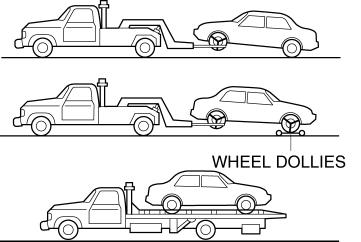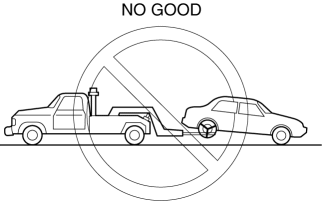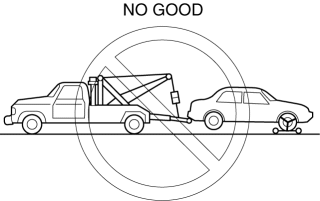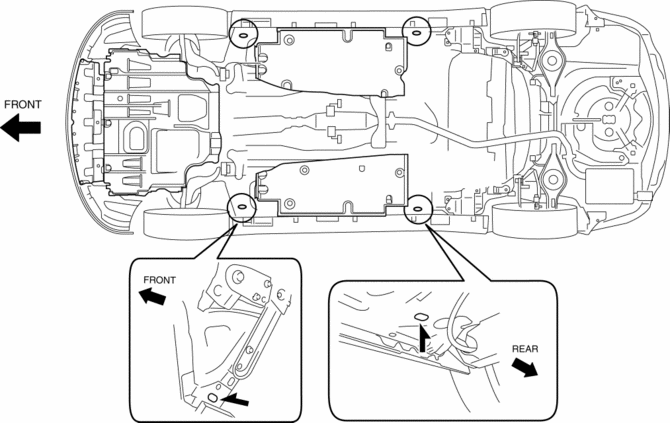Mazda 3 Service Manual: Towing
-
Proper lifting and towing are necessary to prevent damage to the vehicle. Government and local laws must be followed.
-
A towed vehicle usually should have its drive wheel (front wheels) off the ground. If excessive damage or other conditions prevent this, use wheel dollies.

-
When towing with the rear wheels on the ground, release the parking brake.
CAUTION:
-
Do not tow the vehicle pointed backward with driving wheels on the ground. This may cause internal damage to the transaxle.

CAUTION:
-
Do not tow with sling–type equipment. This could damage your vehicle. Use wheel–lift or flatbed equipment.

Vehicle Securing Position
-
When transporting the vehicle by flat bed tow truck or trailer, secure the vehicle to the trailer using the holes and left tiedown loop shown in the figure.

CAUTION:
-
To prevent damage to the vehicle, do not use the tiedown eyelet (front) and the left/right tiedown loops (rear) for towing the vehicle using another vehicle.
-
Do not use the tie-down eyelet and rear hook for tying down the vehicle onto a trailer and flatbed tow truck. It may cause damage to the vehicle.

NOTE:
-
The tiedown eyelet (front) and the tiedown loops (rear) are used only when the vehicle is transported by ship.
 Trailer
Trailer
...
 Body
Body
...
Other materials:
Inner Garnish Removal/Installation
1. Disconnect the negative battery cable..
2. Pull the inner garnish in the direction of the arrow shown in the figure and
remove it while detaching clips and tab.
CAUTION:
When pulling out the inner garnish, be careful not to damage the tab.
3. Disconnect the front tweeter c ...
Fuel Filter (High Pressure) Removal/Installation [Mzr 2.0, Mzr 2.5]
WARNING:
Fuel is very flammable liquid. If fuel spills or leaks from the pressurized
fuel system, it will cause serious injury or death and facility breakage. Fuel
can also irritate skin and eyes. To prevent this, always complete the “Fuel
Line Safety Procedure”, while referring to ...
Front Oil Seal Replacement [Mzr 2.0, Mzr 2.5]
1. Remove the battery cover..
2. Disconnect the negative battery cable..
3. Remove the plug hole plate..
4. Disconnect the wiring harness.
5. Remove the ignition coils..
6. Remove the spark plugs..
7. Remove the ventilation hose.
8. Remove the oil level gauge.
9. Remove the cylinder ...
